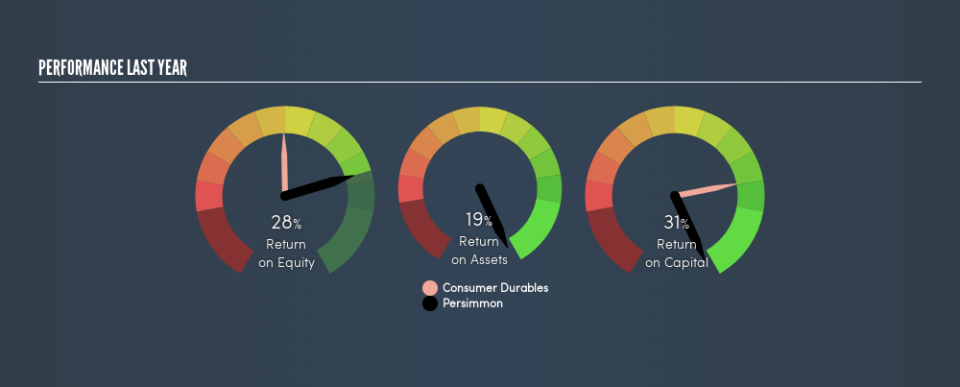A Close Look At Persimmon Plc’s (LON:PSN) 31% ROCE

Want to participate in a short research study? Help shape the future of investing tools and you could win a $250 gift card!
Today we'll evaluate Persimmon Plc (LON:PSN) to determine whether it could have potential as an investment idea. Specifically, we'll consider its Return On Capital Employed (ROCE), since that will give us an insight into how efficiently the business can generate profits from the capital it requires.
First of all, we'll work out how to calculate ROCE. Then we'll compare its ROCE to similar companies. And finally, we'll look at how its current liabilities are impacting its ROCE.
Return On Capital Employed (ROCE): What is it?
ROCE is a metric for evaluating how much pre-tax income (in percentage terms) a company earns on the capital invested in its business. In general, businesses with a higher ROCE are usually better quality. Ultimately, it is a useful but imperfect metric. Author Edwin Whiting says to be careful when comparing the ROCE of different businesses, since 'No two businesses are exactly alike.'
So, How Do We Calculate ROCE?
The formula for calculating the return on capital employed is:
Return on Capital Employed = Earnings Before Interest and Tax (EBIT) ÷ (Total Assets - Current Liabilities)
Or for Persimmon:
0.31 = UK£1.1b ÷ (UK£4.7b - UK£1.1b) (Based on the trailing twelve months to December 2018.)
So, Persimmon has an ROCE of 31%.
See our latest analysis for Persimmon
Is Persimmon's ROCE Good?
ROCE is commonly used for comparing the performance of similar businesses. Persimmon's ROCE appears to be substantially greater than the 15% average in the Consumer Durables industry. I think that's good to see, since it implies the company is better than other companies at making the most of its capital. Regardless of the industry comparison, in absolute terms, Persimmon's ROCE currently appears to be excellent.
Our data shows that Persimmon currently has an ROCE of 31%, compared to its ROCE of 21% 3 years ago. This makes us wonder if the company is improving. You can click on the image below to see (in greater detail) how Persimmon's past growth compares to other companies.
It is important to remember that ROCE shows past performance, and is not necessarily predictive. ROCE can be misleading for companies in cyclical industries, with returns looking impressive during the boom times, but very weak during the busts. ROCE is only a point-in-time measure. Future performance is what matters, and you can see analyst predictions in our free report on analyst forecasts for the company.
Do Persimmon's Current Liabilities Skew Its ROCE?
Current liabilities are short term bills and invoices that need to be paid in 12 months or less. Due to the way the ROCE equation works, having large bills due in the near term can make it look as though a company has less capital employed, and thus a higher ROCE than usual. To check the impact of this, we calculate if a company has high current liabilities relative to its total assets.
Persimmon has total assets of UK£4.7b and current liabilities of UK£1.1b. As a result, its current liabilities are equal to approximately 24% of its total assets. This is quite a low level of current liabilities which would not greatly boost the already high ROCE.
What We Can Learn From Persimmon's ROCE
With low current liabilities and a high ROCE, Persimmon could be worthy of further investigation. Persimmon looks strong on this analysis, but there are plenty of other companies that could be a good opportunity . Here is a free list of companies growing earnings rapidly.
I will like Persimmon better if I see some big insider buys. While we wait, check out this free list of growing companies with considerable, recent, insider buying.
We aim to bring you long-term focused research analysis driven by fundamental data. Note that our analysis may not factor in the latest price-sensitive company announcements or qualitative material.
If you spot an error that warrants correction, please contact the editor at editorial-team@simplywallst.com. This article by Simply Wall St is general in nature. It does not constitute a recommendation to buy or sell any stock, and does not take account of your objectives, or your financial situation. Simply Wall St has no position in the stocks mentioned. Thank you for reading.

 Yahoo Finance
Yahoo Finance 
